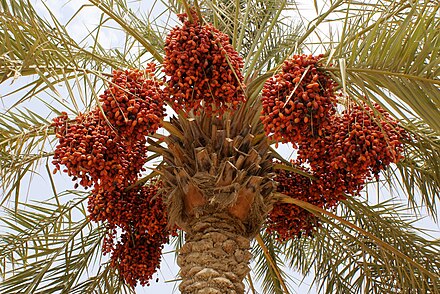
Scientific Name: Phoenix dactylifera belonging to the Arecaeceae family
Origin: Middle East
Description: The female date trees produce white flowers and therefore produce the fruit. Dates are drupes that can be a wide range of colors, yellow, brown or black. They grow in clusters, a single bunch can hold more than 1000 dates (Gaur, et. al, 2024).
Historical Medicinal Use: Fresh dates were thought to be good for the digestive system but not ideal for the throat or chest.
Modern Medicinal Use: Today, dates are mainly consumed when dried. Dates are high in antioxidants and fiber. They are also abundant in minerals such as potassium or magnesium and vitamins. Due to its properties, it is used to help control blood sugar and helps with digestive problems such as constipation (Elliott, 2022). Also, certain studies indicate that dates aid in lowering inflammatory markers in the brain.
Elliott, Brianna. “8 Proven Health Benefits of Dates.” Healthline, Healthline Media, 13 Oct. 2022, www.healthline.com/nutrition/benefits-of-dates.
Gaur, Aakanksha, et al. “Date Palm.” Encyclopædia Britannica, Encyclopædia Britannica, inc., 2 Apr. 2024, www.britannica.com/plant/date-palm#:~:text=Holding%20the%20Sky-,Physical%20description,that%20emerged%20the%20previous%20year.
“How Are Dates Grown?” Dateland Date Gardens, www.dateland.com/how-are-dates-grown/.
Larkin, Deirdre. “The Medieval Garden Enclosed-The Palm.” THEMET, The Metropolitan Museum of Art, 16 Jan. 2009, www.metmuseum.org/fr/articles/medieval-garden-enclosed-palm.
De Fouquet, Marie. Recueil des remèdes faciles et domestiques, choisis et expérimentés, et très approuvés pour toutes sortes de maladies internes et externes, et difficiles à guerir. 1685.